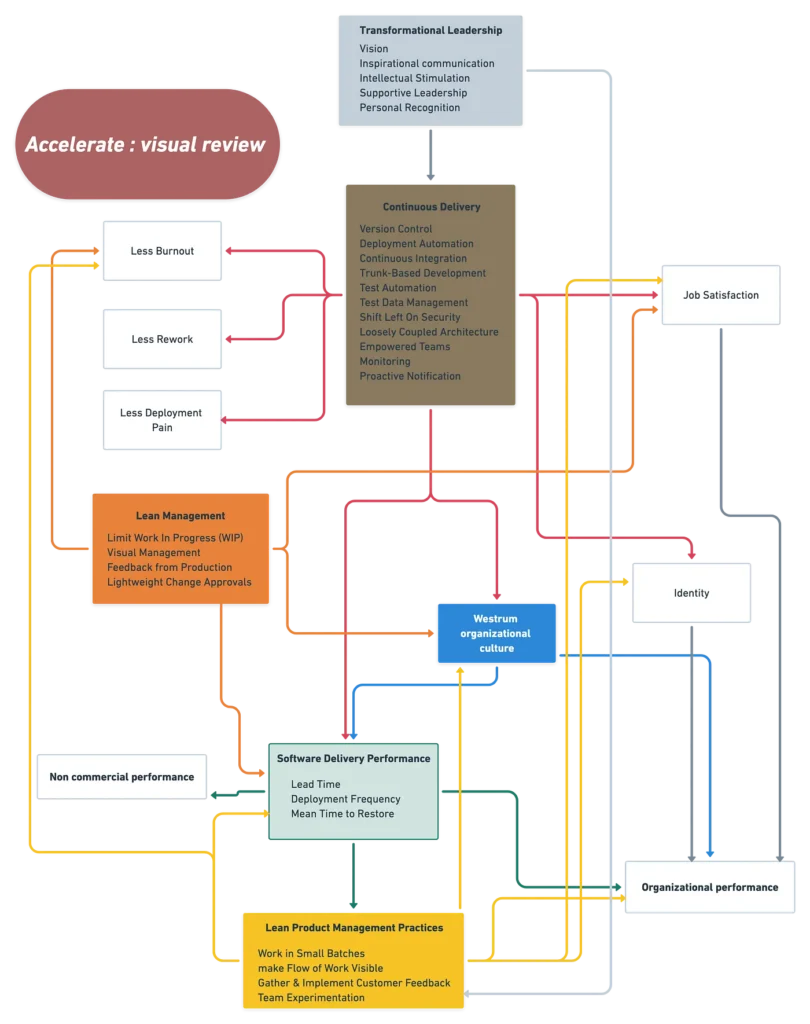According to the research in Accelerate, focusing on improving three metrics can be a catalyst for organizational transformation. In my last article, I laid out the research showing that we can use Mean Time to Restore, Lead Time, and Deployment Frequency as a way to gauge progress on much more impactful transformations that ultimately improve Organizational Performance.
This naturally leads to the question – Why?
What about focusing on those three metrics would cause both a shift in culture and a shift in organizational performance?
Let’s refresh our memory of the chart we looked at last time showing predictive correlative relationships.

Image Source: https://medium.com/@steve.alves2/accelerate-book-cheatsheet-d065e482f8a0
What are the necessary conditions to continuously improve Software Delivery Performance?
Could other systems of management or delivery also improve Software Delivery Performance?
Probably so. But what are the essential elements of this predictive relationship that demand upstream changes of one kind or the other?
- Awareness of the system as a system
- A system-level goal (as outlined in The Goal)
- A mechanism for finding bottlenecks
The magic of focusing on Software Delivery Performance happens because it focuses on an output of the system as a system. While delivering software doesn’t mean you’ll positively impact the organization, focusing on improving it will change how people relate to one another positively.
A mechanism to find bottlenecks (such as limiting work in progress) can help identify what needs to be improved and what people are necessary to improve it.
To fix the problems, they must be communicated, and that means that information needs to be discovered and encouraged to be shared.
That requires transformational leadership to make space for new behaviors.
New leadership patterns are going to have wide-ranging effects on many different aspects of how people perform.
As people start to be given more latitude and freedom and are encouraged to own the results and collaborate, patterns of organization and practice will be developed that remove impediments to flow.
A culture that values the overall team performance instead of individuals will help collaboration to happen at the right levels, and if that is also connected with individual mentoring and growth, who knows what can happen?
This is an overly simplified map of the process, but a valuable one.
If we have a picture of what levers will facilitate change, we can stay the course when things get rocky.